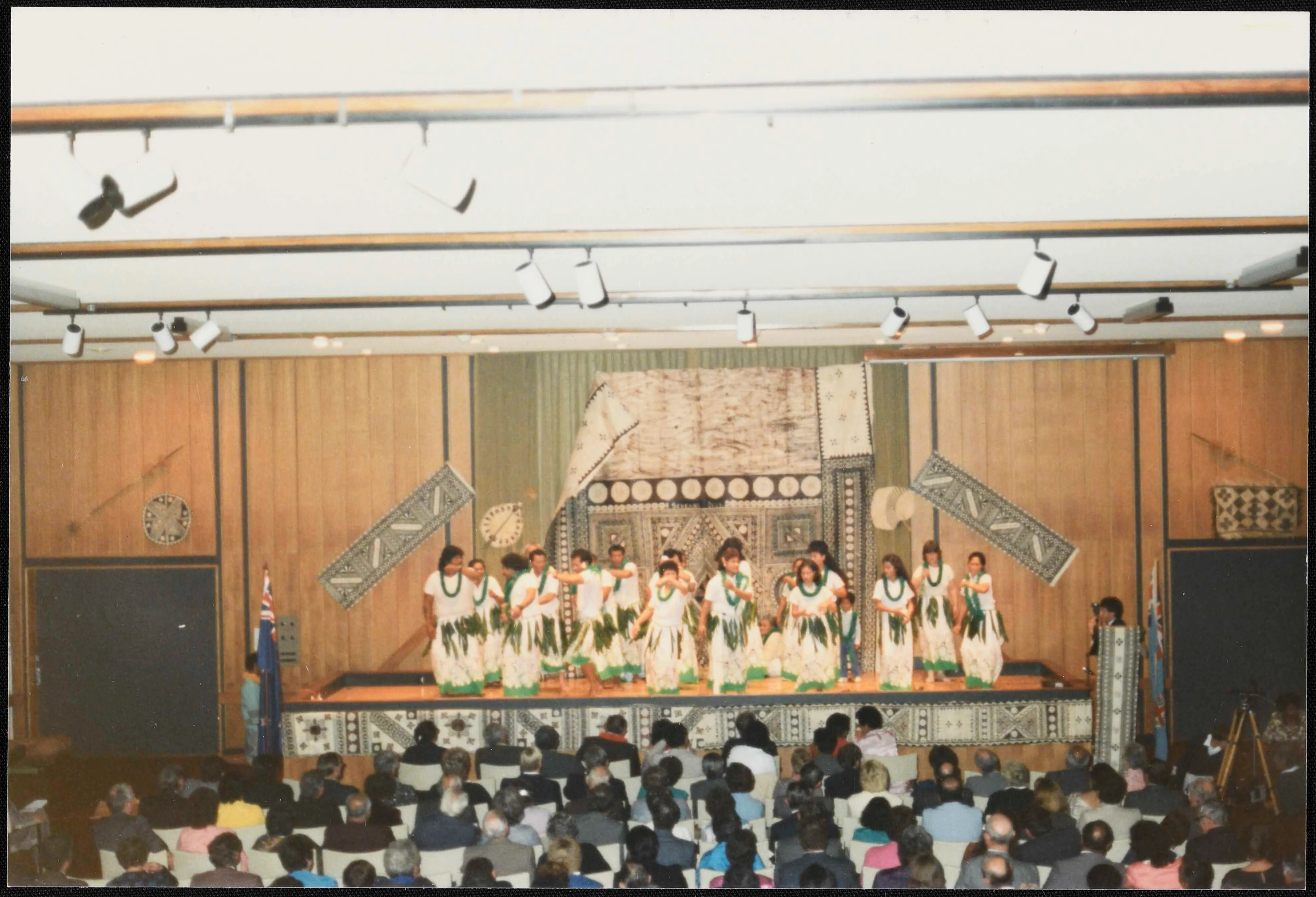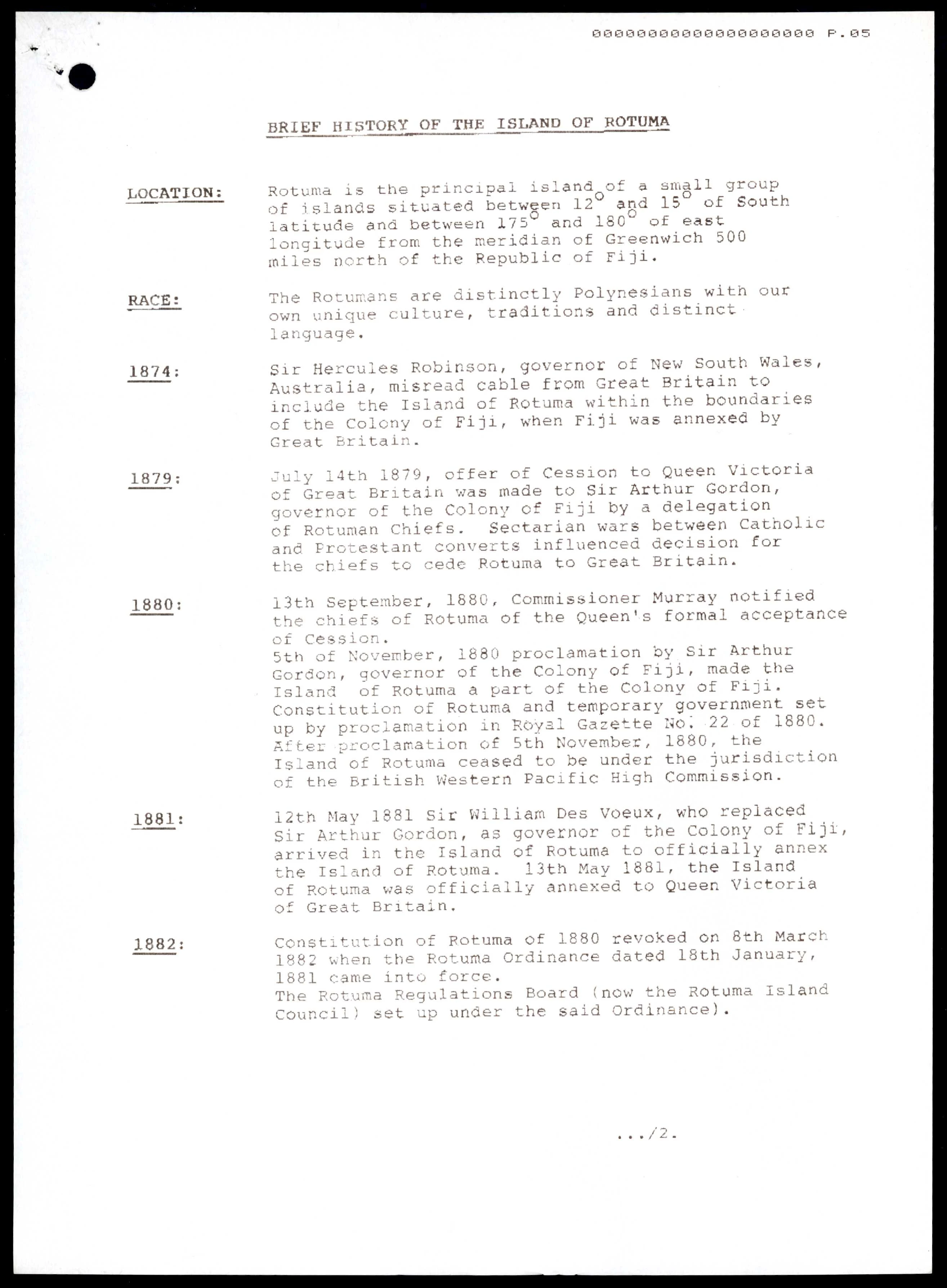Rotuman records in our holdings
Discover records about Rotuma and the Rotuman culture in Aotearoa – and help us learn more about the story they tell.
Among the 7 million items in our holdings is a small number of records about the island of Rotuma, and Rotuman people and culture in Aotearoa. The Te Maeatanga digitisation programme has made three of these records available to view online.
The records allow us to glimpse the people, events and ideas that contributed to a Rotuman cultural revival in Aotearoa at the end of the twentieth century. But as isolated snapshots, they pose as many questions as they answer.
As we make these records available online, we hope to hear from members of the Rotuman community who can tell us more about them and the people who created them. Did you belong to the Rotuman Fuihelava Association or the Rotuman Cultural Association of Auckland? Did the organisation send representatives to the South Pacific Forum in 1993? What other records should we prioritise for digitisation?
Traditional Pacific Island Arts - Special Art Projects Scheme - Rotuma Fuihelava Association
In 1986, the Rotuman Fuihelava Association in Auckland won a grant from the Queen Elizabeth II Arts Council of New Zealand. The association used the grant to buy traditional materials and instruments to promote the Rotuman cultural heritage. The record includes twenty files, including the application form, photos and the related correspondence between the association and the Council. The files it contains reveal the association’s goals and aspirations for its members.
Traditional Pacific Island Arts – Multi Discipline Scheme – Rotuman Cultural Association
After 1986’s successful funding bid, the newly formed Rotuman Cultural Association of Auckland made another request in 1992 – this time, to the Council for Māori and Pacific arts (Te Waka Toi).
The membership of the group was around 50 – and the total Rotuman population of Aotearoa, they believed, just 100 people.
The record that contains the funding application makes fascinating reading. The community was concerned that the unique Rotuman identity and language was in danger of being lost. Against this background, they again applied for funds to buy traditional costumes – but they also hoped to send two representatives to the South Pacific Forum, to “present our case for recognition of Rotuma as a separate and recognisable ethnic group”, separate from Fiji. They had links to the Molomahao-Rotuma Organization of Sydney Australia, who were also preparing to send representatives to the Forum. The members prepared a history of Rotuma as part of the application – you can read this history in Files 17 - 29 of the digitised record.
The last document in the record is a letter from the secretary of the Rotuman Cultural Association, thanking Te Waka Toi for granting their application. Our knowledge of the association's work ends with this document. If you or someone in your whānau was part of the project and you know more, we'd love to hear from you.
Did the delegates get to the forum?
What came of it?
Are Rotuman cultural groups still active in the community?
Advisory Services Division - Overseas Aid and Involvement - Fiji - Rotuma Study
In the early 1980s, the New Zealand government was investigating new areas of production and trade in Rotuma. This development plan surveys “potential options and considers in detail production, economic, social and marketing characteristics associated with the various alternatives”. It explores the possibility that Rotuma could produce new crops like cinnamon and cardamom, and process, can or package fruit and vegetables on the island. The ministry recommends a fully-equipped research station to support these new initiatives.
We're eager to learn more about these schemes, including:
Looking back now, did any of them last?
Were there any lasting benefits for the Rotumans?



